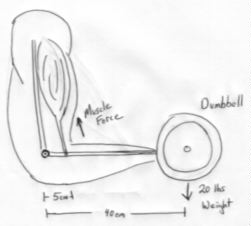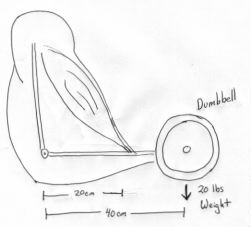
Whitney Young Magnet High School
ARISE BIOLOGY
Created by the ARISE Whitney Young Project
|
|
|
|
|
|
Rationale -
Syllabus -
Sample Lesson
Rationale
Due to the huge explosion in research in the biological sciences, to be scientifically literate people need to understand biology at a much more complex level than in the past. Therefore we believe it must be taught at a somewhat more complex level in which a background of physics and chemistry will be essential. We are currently in the process of putting together a third year biology course that will take advantage of the solid foundation established in the previous coursework in physics and chemistry. Those students who wish to take the Advanced Placement Biology exam in May will have supplementary work throughout the year to prepare them.
Building on the experiences of these ARISE students over the past two years our biology course will emphasize to a greater degree the cross-curricular skills like graphing skills, error analysis and use of the scientific method. Students will revise and improve the scientific research and/or bridge design they have produced from the previous years as well.
As education research reflects, engaged learning activities are far more effective than traditional teaching methods so our ARISE biology course will incorporate these as much as possible. We will do this by using lots of hands-on activities, open-ended labs and student research into contemporary topics in biology to let them develop a solid understanding and their own opinions.
We are excited, however, about the prospect of offering an engaging year of learning to a fine group of juniors who will arrive equipped for a real adventure in modern biology. Our first group of ARISE biology students will study in the school year 1999/2000.
Syllabus
FIRST SEMESTER
Unit 1: Biology as a Science
Scientific method, physics/chemistry links, safety, technology, real vs. pseudoscience, characteristics of life
Unit 2: Ecology
Communities and ecosystems, succession, population dynamics, global issues
Unit 3: Chemistry of Life
Water, organic molecules in organisms, free energy changes, enzymes
Unit 4: Cells
Prokaryotic and eukaryotic cells, membranes, subcellular organization, cell cycle & regulation, meiosis and gametogenesis
Unit 5: Cellular Energetics
Coupled reactions, fermentation and cellular respiration, photosynthesis
SECOND SEMESTER
Unit 6: Heredity
Eukaryotic chromosomes, inheritance patterns
Unit 7: Molecular genetics
RNA and DNA structure and function, gene regulation, mutation, viral structure and replication, nucleic acid technology and applications
Unit 8: Evolutionary biology
Early evolution of life, evidence for evolution, mechanisms of evolution, speciation
Unit 9: Diversity of organisms
Evolutionary patterns, survey of the diversityof life, evolutionary relationships, phylogenetic classification of life
Unit 10: Plants and the colonization of land
Adaptations to land, reproduction, growth & development, plant nutrition & transport, response to the environment
Unit 11: Animals
Reproduction, growth & development, structural &physiological adaptations, response to the environment
Unit 12: Behavioral adaptations
Sample Lesson
DAY 1
SHOW OVERHEAD:
NORMAL ARM
Ask Question:
How much force (lbs) is required by the muscle to lift the dumbbell?
Let students suggest and explain their answers. If needed, remind them of the physics principle of torque. Torque is the force (lbs) times the distance to the pivot point (elbow). The clockwise torque (20 lbs x 40 cm) must be balanced by a counterclockwise torque (F x 5cm). Therefore, the muscle force must be 160 lbs. Another way to think about it is that since the ratio of the distances to the elbow joint (40/5) is 8, then the force required by the muscle is 8X the weight that the arm is lifting.
Show next overhead:
WHAT IF?
Ask Question:
How much force (lbs) is required now? why?
Let students suggest and explain their answers. If needed, help them realize that if the muscle tendon were attached further from the elbow it would have more torque so less force would be needed. In the case above, only 40 lbs, or 4X less than normal.
Now lead the students in a discussion about why the bicep is attached where it is instead of where it would generate greater torque as above. Would there be any disadvantages?
Next have the students draw a picture in their journal like the first arm. Give them the same dimensions; the forearm is 40cm, the bicep is attached 5cm from the elbow. Ask them to figure out the change in length of the bicep when the hand is lifted through an arc of 32 cm. Although it is not necessary, if some students want to know the original length of the bicep, tell them to use their own estimate. The approximate change in length divided by 32cm will equal the ratio of the distances to the elbow, a change in length of approximately 4 cm.
Now repeat the figuring for picture two with the bicep attached 20 cm from the elbow. Now the required change in length is approximately 16 cm, half the original length of the muscle.
Could a muscle contract by 50%. Is there a limit to the amount muscle fibres can contract?
ASSIGNMENT:
Write a brief essay on the most efficient muscle arrangement for this joint, the advantages and disadvantages this would have. Is this arrangement present in any other organisms?
(the shoulder-wrist arrangement set up is sort of present in the grasshopper. This is a natural lead in to the jumping contest!)Are there other possible arrangements that are as efficient as the human arm is?


